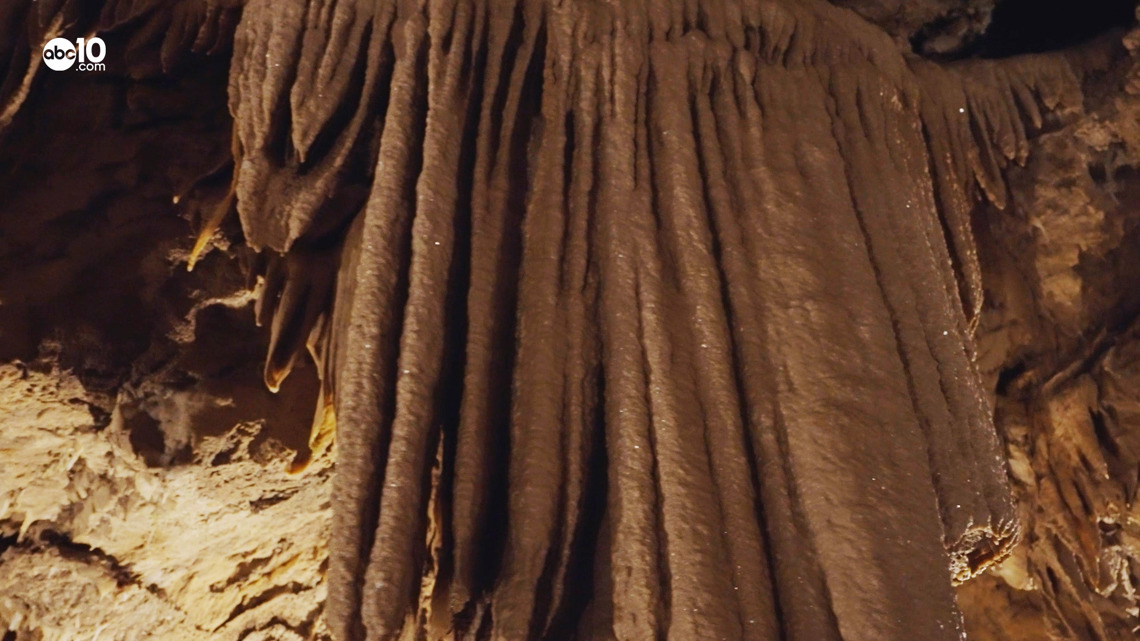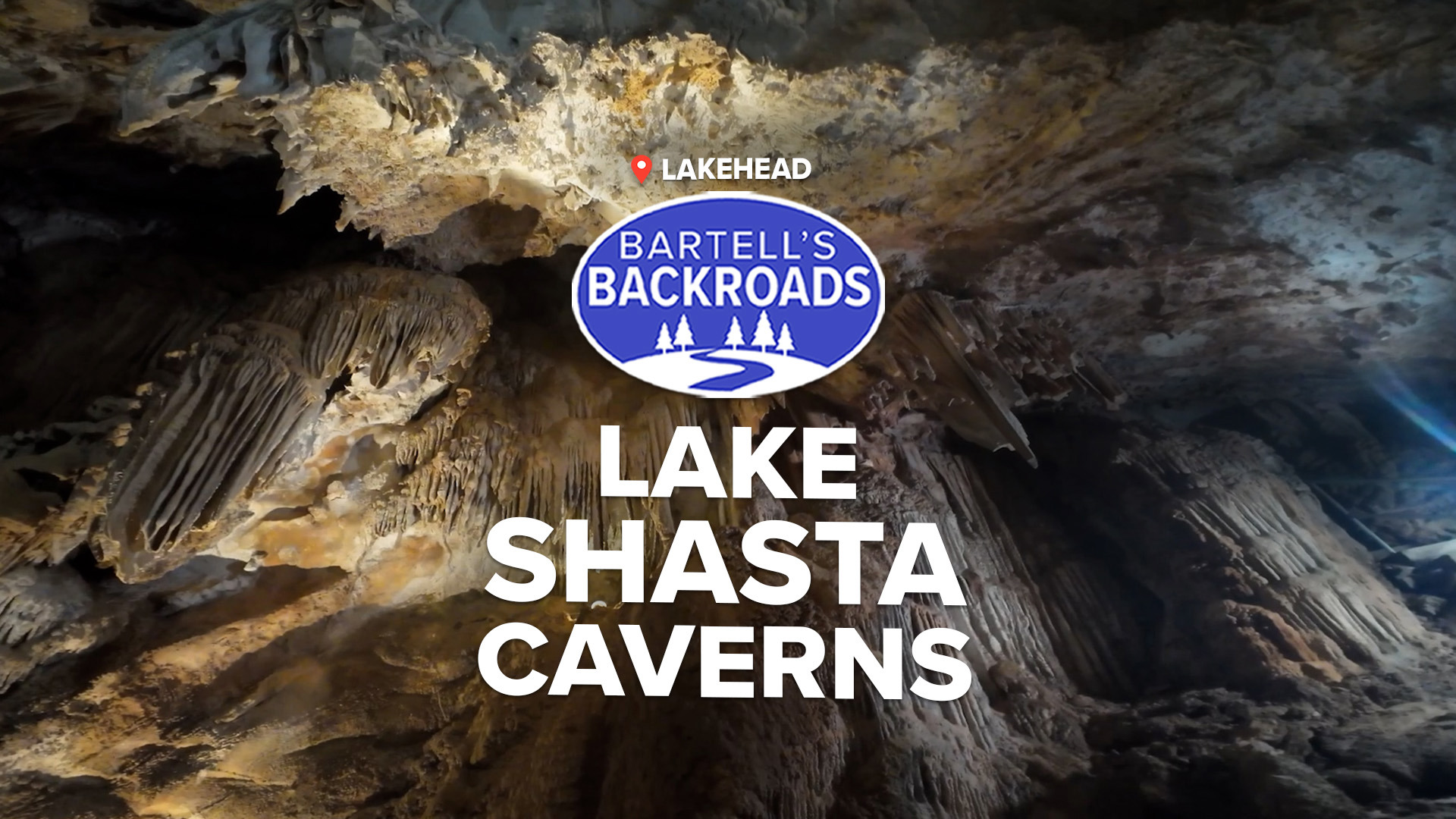LAKEHEAD, Calif. — In 1887, long before the dam at Lake Shasta was built, a fish hatchery worker by the name of J.A. Richardson, walked up the canyon from the McCloud River and discovered a hole in the ground.
What he found would later become one of the area’s greatest tourist attractions: the Lake Shasta Caverns.
These days, you can't just walk into the caverns. First, you need to catch a boat ride with Captain Cave Dave.
The obvious question is to ask how he got that name.
“Well, the obvious answer is because it rhymes,” Cave Dave deadpans.
If you like witty comebacks, he will keep you entertained for the entirety of the 10-minute boat ride.
Once off the boat, you’ll jump aboard a bus that will take you up a twisty hill to the entrance, where you will get what many consider the best view of Lake Shasta.
"Today we will be entering through a man-made tunnel that was dug in the 1960s," says tour guide Acacia Copek.
From there, she warns about the hefty amount of walking that lies ahead.
"If you are comfortable with the stairs, just follow me," she says. "And watch your steps. They never really end.”
In all, there are about 600 stairs in the cavern leading you up, down and all around a winding maze of holes and shafts.
"It's just under a mile long," Copek says of the tour. "We gain 200 feet in elevation in the cave and climb the equivalent of an eight story building.”
All that walking is worth it, especially when you make it to the first large opening where you will learn the difference between stalactites and stalagmites.
"Stalactites hang tight to the ceiling, and have a 'c' in them for 'ceiling.' So, they're growing down as to where stalagmites might reach the ceiling some day and have a 'g' in them for 'ground,'” says Copek.
Stalactites and stalagmites form as mineral rich water seeps through cracks in the cavern and slowly those minerals accumulate. It takes a while for the rocky-looking spires to grow.
“Well, they only grow one inch every 100 years, so it's really slow. Our cave is estimated to be about three and a half million years old,” says Kopek
TAKE A TRIP ON BARTELL'S BACKROADS:
► See an interactive map of everywhere John has visited on the backroads
► Watch all of the Backroads videos
► Follow John on Facebook
As you make your way up and down the steps you may get a little hungry. Good news for you. The cavern produces another natural mineral formation called cave bacon, named for its wavy structure.
The bad news? It doesn't have that bacon-y flavor that many breakfast meat enthusiasts have come to know and love.
“No, it won’t taste like anything at all," Copek admits.
Acacia says not only is the cave bacon tasteless but so is the cave popcorn. This sparkly, puffy mineral deposit covers a small opening.


Acacia isn’t sure why so many mineral deposits are named after food but licking and touching the rock formations is strictly prohibited because they are very fragile. The first explorers of the caverns found that out the hard way when they used dynamite to widen the passageways.
“Oh, yeah, lots of broken formations on our tour from that dynamite blowing things up in the cave. Luckily, as water flows over them the formations will start to grow again.”
The Lake Shasta Caverns opened up for commercial tours in 1964, and that’s when they started to add steps and handrails. Prior to that, visitors lowered themselves into the cave’s natural entrance using ropes.
"A lot of field trips from schools in the area, and a lot of people from the town of Baird came through the natural entrance,” says Copek.
Not only did visitors have to climb in with ropes but the toured the cave with candles.
"Today we get to see a whole lot more because we have electricity,” Copek says as she flips a few switches and lights up the interior of the cavern.
It may be a lot of walking but, the Lake Shasta Caverns truly are a wonder to see and worth the travel it takes to get there.
MORE UNDERGROUND FUN ON THE BACKROADS: It's the only place around where you can go river rafting underground.

